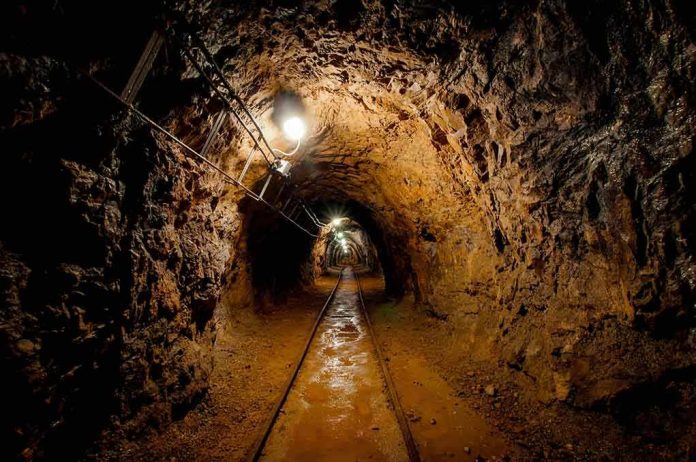
America’s push to secure vital resources and sideline foreign control faces a pivotal test as the U.S. proposes adding copper, potash, and four other minerals to its critical minerals list—directly countering years of globalist dependence and foreign leverage.
Story Snapshot
- The Department of the Interior proposes expanding the federal critical minerals list to 54, adding copper, potash, silicon, silver, rhenium, and lead.
- This move aims to protect U.S. supply chains from Chinese dominance and respond to recent export bans targeting key minerals.
- The proposal follows new risk assessment methods and is open for public comment before finalization.
- Industry groups and security advocates support the change as essential for jobs, defense, and American independence.
U.S. Expands Critical Minerals List to Counter Foreign Reliance
The U.S. Department of the Interior, in coordination with the U.S. Geological Survey, has proposed a major expansion of the federal critical minerals list for 2025. Six minerals—potash, silicon, copper, silver, rhenium, and lead—are set for addition, raising the total to 54. This action aims to strengthen domestic supply chains that are essential for manufacturing, national defense, and infrastructure. The expansion comes amid ongoing geopolitical tensions and direct export restrictions by China, which currently dominates global processing capabilities for many of these minerals.
The timing of this proposal is intentional. The USGS released the draft list for public comment, starting a 30-day period for feedback. This follows years of supply chain disruptions and a sharp reassessment of America’s vulnerabilities, especially as China has repeatedly weaponized its control of key resources. By explicitly targeting minerals where foreign control poses a strategic risk, the administration is signaling a return to policies that prioritize American sovereignty and security over globalist entanglements.
Historical Policy Shifts: From Global Dependency to Strategic Independence
America’s reliance on foreign—often adversarial—sources for critical minerals has deep roots. The 2017 Trump executive order and the Energy Act of 2020 mandated that the federal government regularly update the critical minerals list and address supply chain vulnerabilities. By 2022, China controlled the processing of at least 30 out of 50 minerals on the existing list, and subsequent years saw Beijing imposing export restrictions on strategic materials. The current expansion is a direct response, using new risk assessment methods to better reflect economic realities and the probability of foreign supply disruptions. This policy shift marks a decisive break with the prior administration’s softer stance on global supply interdependence.
Critics of past policies argue that years of “woke” globalism, excessive regulation, and environmental red tape left America exposed to hostile actors and stifled domestic industry. The present approach, supported by industry leaders and security advocates, is designed to restore economic independence and protect American jobs. Proponents further stress that domestic mining and processing are not just economic imperatives, but critical to upholding national security and America’s standing in the world.
Stakeholders and National Security Concerns
This proposal involves a complex web of interests. The Department of the Interior and the USGS are leading the charge, using improved economic modeling to guide decision-making. The National Mining Association has applauded the expansion, emphasizing that all minerals are critical due to their co-location and processing realities. Industry groups advocate for streamlined permitting and regulatory support, arguing that bureaucratic delays and overregulation have long hindered domestic growth and left the nation exposed to foreign manipulation.
Foreign governments, particularly China and Canada, are key players. China, in particular, has repeatedly used export controls as a geopolitical weapon, threatening the stability of American supply chains. Congress and executive agencies are tasked with balancing economic, environmental, and national security priorities, but the current direction is clear: reducing foreign dependence and enhancing domestic capability are paramount. This approach resonates with Americans who value limited government, constitutional protections, and the principle that U.S. policy must serve American interests first.
Impact and Debate: Balancing Economic Growth and Resource Security
In the short term, the expanded list is expected to boost investment in American mining and processing projects, potentially accelerating job creation and infrastructure upgrades. Permitting processes may be streamlined, and public debate is expected as the comment period progresses. Long-term, these changes could reduce U.S. vulnerability to foreign supply disruptions and lessen the leverage of adversarial powers over the American economy. However, some debate persists regarding the inclusion of certain minerals, such as potash—where supply from allies like Canada remains stable—though the new risk model supports a broad, proactive approach.
US Proposes Adding Copper, Potash, 4 Others To Critical Minerals List https://t.co/hDHeAqKi18
— zerohedge (@zerohedge) August 26, 2025
Expert perspectives vary. While industry leaders argue for even more aggressive reforms and investment, some caution that expanding the list too broadly could dilute focus and resources. Congressional Research Service and USGS reports confirm that the methodology and rationale are sound and anchored in national security concerns. Critics of the expansion note potential environmental impacts and community disruptions from increased mining, but supporters argue that these challenges can be addressed without sacrificing the nation’s independence or prosperity. For many, the proposal is a necessary corrective after years of misplaced priorities and government overreach that eroded the nation’s economic foundations.
Sources:
NMA applauds expansion of USGS critical minerals list
USGS Open-File Report 2025–1047
Congressional Research Service report
Department of Energy critical minerals policy
US adds copper, potash, silicon in critical minerals list shake-up







